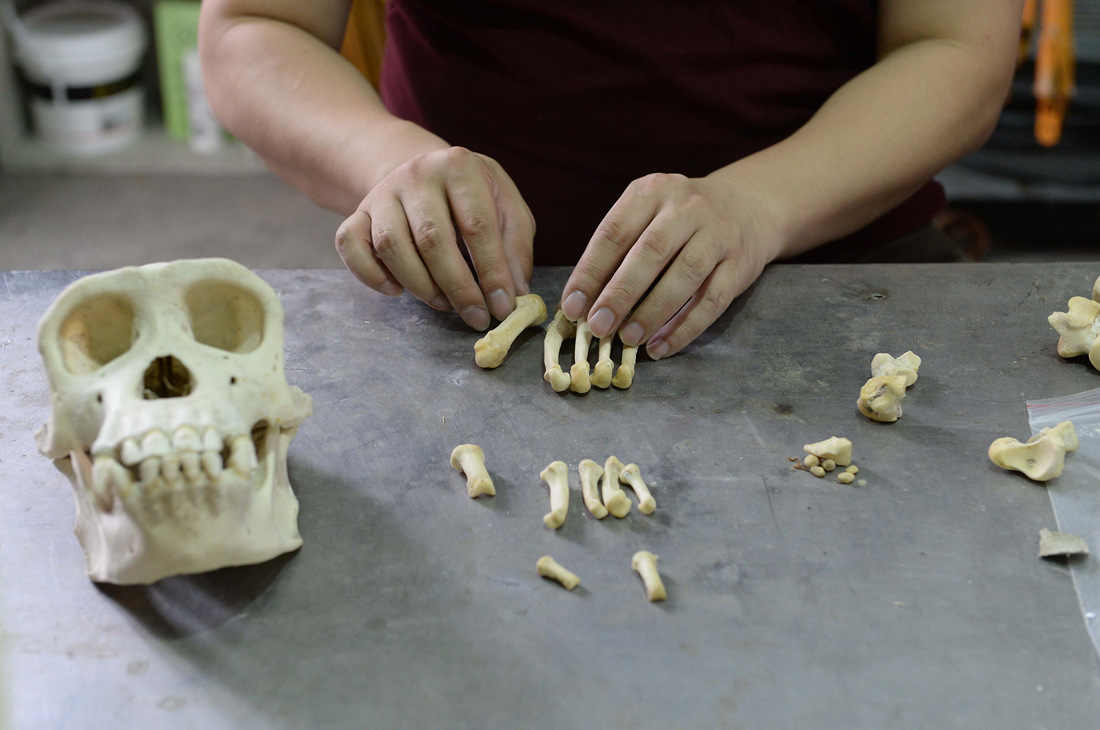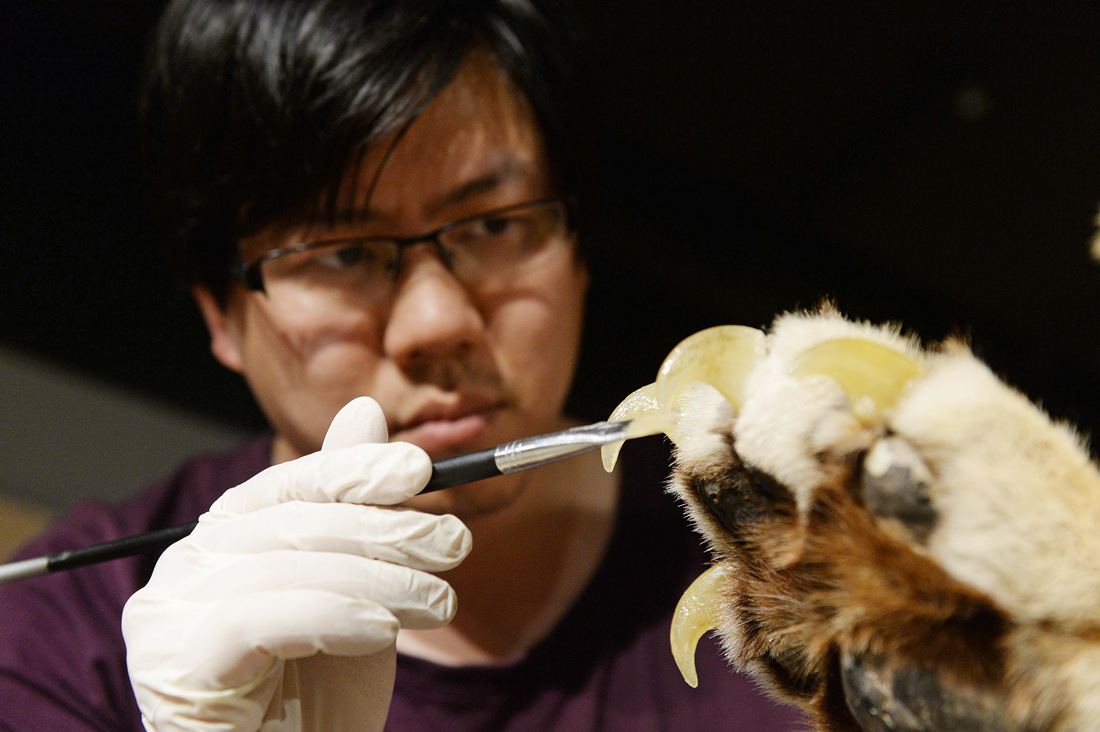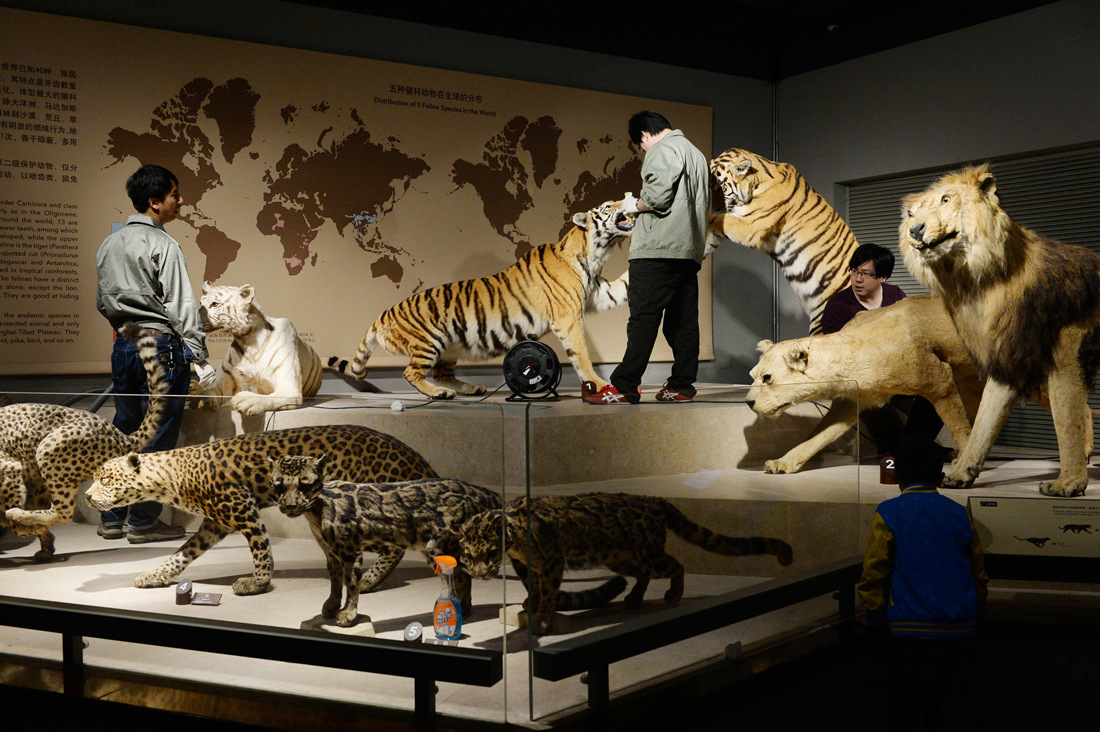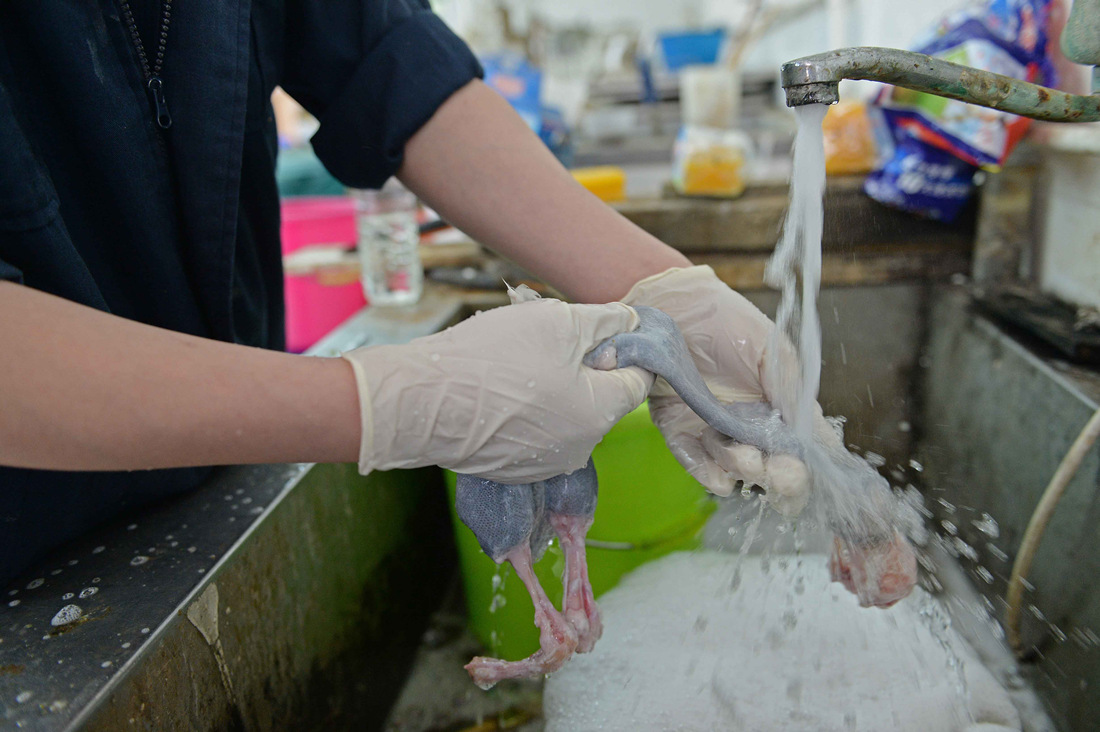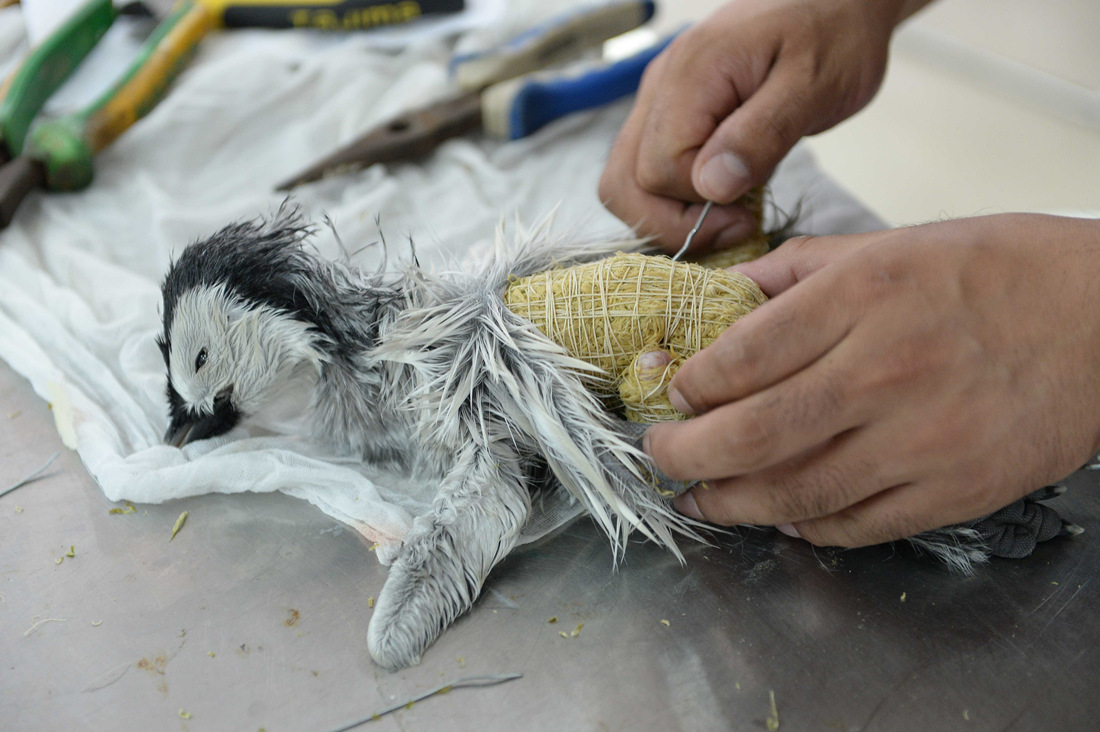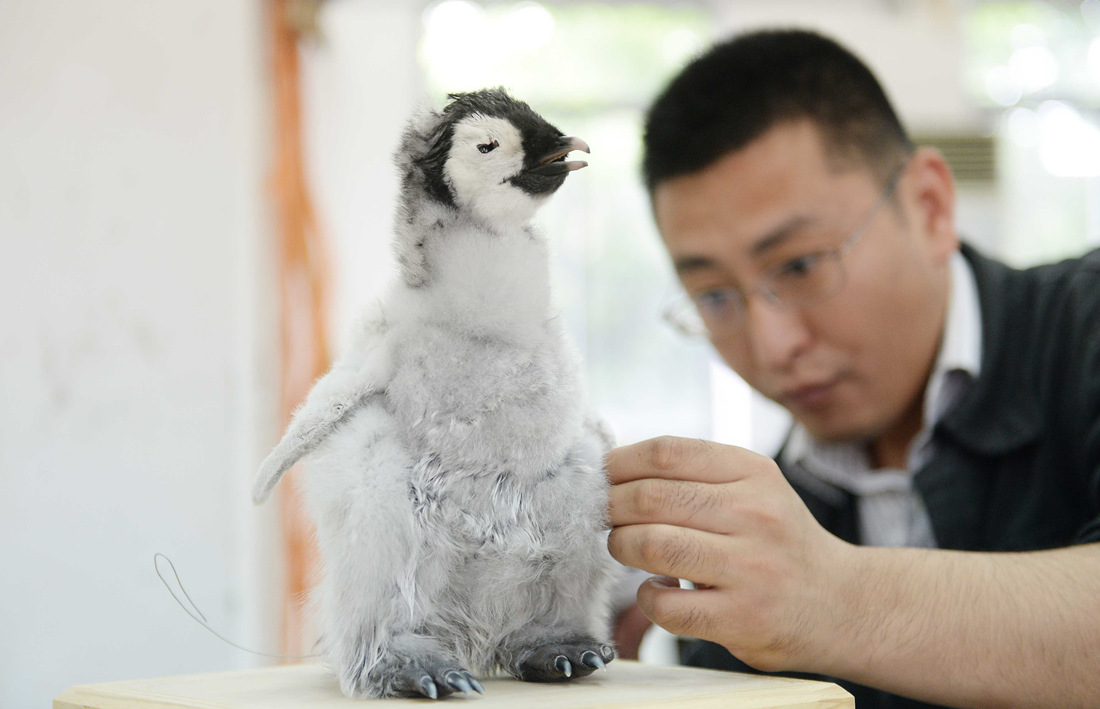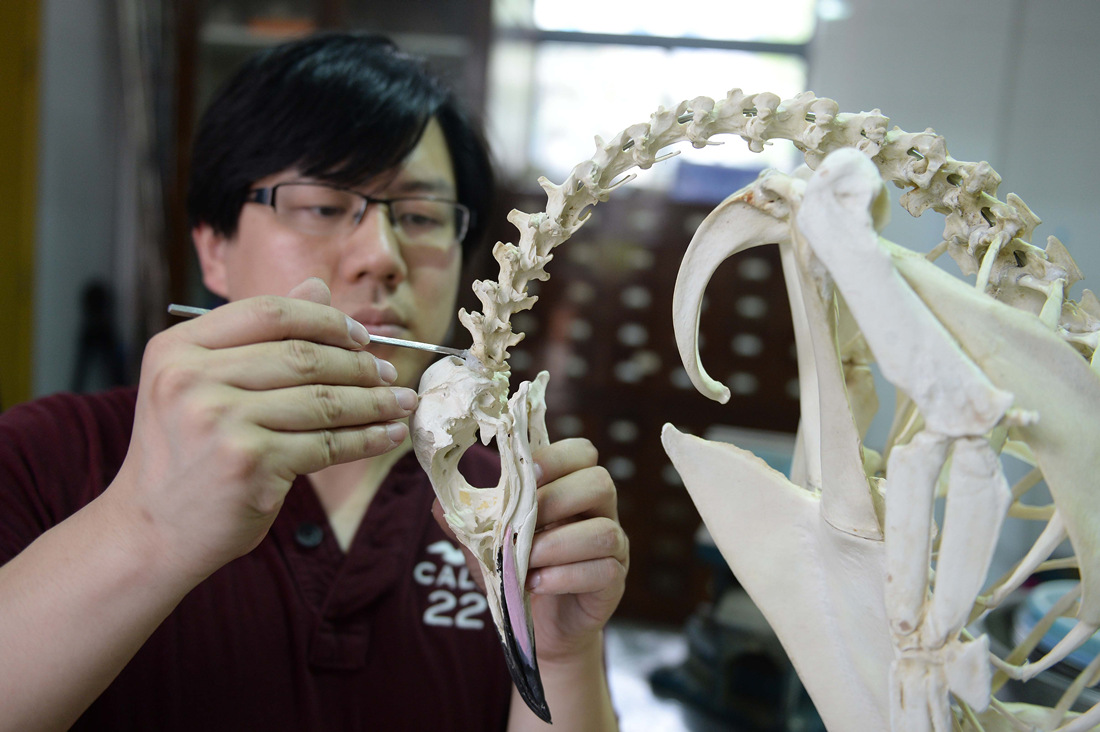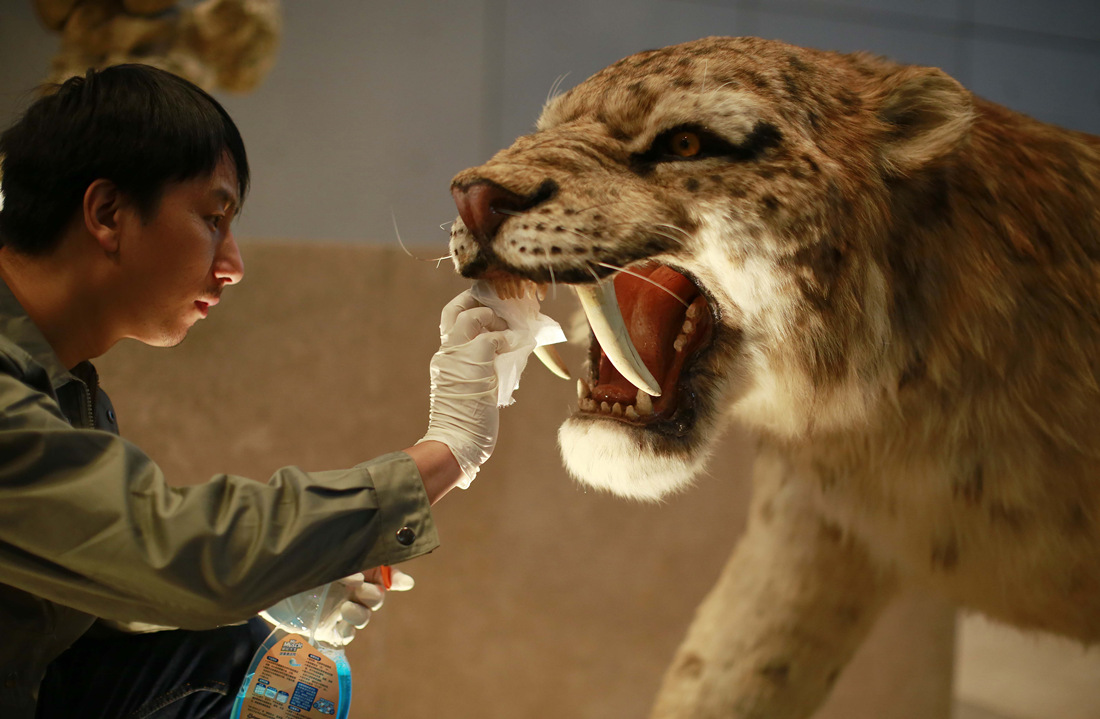Editor's Note:
Taxidermy is not a well-known field in China, and less than 100 people nationwide have mastered the skill. This should come as little surprise, as the complicated bone structures they are tasked with sculpting can vary greatly from species to species.
Zhang Tangming has been working at the Shanghai Science and Technology Museum for eight years, over which he has helped produce more than 130 animal specimens. As the museum needs to be cleaned regularly, the 11,000 specimens inside require careful maintenance to ensure they remain in tip-top condition. As a result, the job is often described as requiring "a combination of a man’s strength and a woman's delicate touch".

